Mandalay is the northernmost location on our Myanmar itinerary and lies on the banks of the Ayeyarwaddy river. The short flight from Nyang U (Bagan) takes just 30 minutes on the ATR aircraft. Some opt to take a slow boat (up or down) or bus between Mandalay and Bagan which takes about 7 hours. It is the second largest city in Myanmar (after Yangon) and it seems to take this status a little bit too seriously in building its airport a full 45 km away from city centre. The archway for "Mandalay International Airport" is a full 12 km. away from the airport and there is nothing on that entire stretch of deserted road.
Despite the hours wasted getting to and from Mandalay airport, we still had time to experience life in the interior of the country
. While, Bagan was purely a destination of historical interest, Mandalay provided us the opportunity to explore a second urban area in the country. We found parts of it to be much more modern compared to Yangon. Unlike most Asian cities, Mandalay has its streets laid out in a western style rectangular grid. Strangely, both axes use the word "Street" and use sequential numbers. The range of numbers used for the axes are non-overlapping (thankfully!). One set runs in the low teens till about 30 and the other runs from the low 60s to the 90s. This arrangement makes for succinct and useful directions like '25th and 82/83". No more no less.
Mandalay Hill and the Mandalay Palace grounds dominate this medium sized city of 800,000. City transport consists of taxis (old beaten up Toyotas with Right Hand Drive), shared pickups (small flat bed trucks with a curved roof and benches beneath) which operate between select destinations. No guidebook mentions buses but we were presented with these options as well and made full use of them
. While looking for the departure point used by the shared pickups, we came across Siddhi Vinayakar Aalayam (Tamil Ganesha Temple) and a gentleman outside the temple directed us to Bus No. 5 in Tamil. Despite the presence of this temple and another Hindu temple in the next block (the style looked North Indian), we did not see a significant Indian population in Mandalay. But there was no shortage of Indian/Nepali restaurants and street food. You cannot beat the roadside Chapati stalls for value. Some Indian restaurants have stomach churning menus (at least for us vegetarians) with the "inner organs of beasts and fowls" on offer. Our favorite was the Pure Vegetarian Nepali restaurant with the smiling youngsters who speak Hindi learnt from watching films.
Mandalay Hill rises dramatically from the surrounding plain and houses a (you guessed it) Buddhist temple on top which has sweeping views of the nearby Shan mountains, the Ayeyarwaddy River and Sagaing Hill to the south. Visitors looking for a workout can climb the hundreds of steps (covered by roof) to the top
. Plenty of rest options are available along the way through vendors of cold drinks and small pavilions housing nats (spirits). In order to save time, we opted for a shared pickup (that just plies up and down the hill) that takes you to the top in minutes after winding through several hairpin bends.
In the other direction, near the southern end of the city is Mahamuni Paya, a Buddhist shrine, highly revered by the Burmese. The sanctum sanctorum is off limits to women (something we saw at a few other sites as well) and features a Buddha image covered in layers of gold leaf. New layers are still being added. TV screens are posted outside the inner sanctum to allow devotees to offer worship from outside as well. The temple complex is massive with several pavilions, some with paintings depicting the history of the temple. Legend has it that the Buddha himself journeyed from India to Mandalay and consecrated his own image. There is also a set of bronze figures apparently stolen from Angkor Wat and passed through several hands before finding a home here
. Worshippers here believe that chronic illnesses are cured by rubbing the corresponding body parts of these images. The most striking image is that of the three headed elephant Airavata.
We spent our second day visiting the classic triptych of Amarapura, Innwa and Sagaing on shared taxi. Oddly enough, this "day trip" covers less ground compared to the trip to the airport! Amarapura presents the opportunity for those who missed the procession of monks and the devotees who provide them with food for the day in Luang Prabang, Laos. Unlike the Loatian event that takes place before dawn, the Amarapura version takes place just before lunch time.
Most monks wear burgundy colored robes and seem to follow the age based chronological order. A few monks wore white. The devotees were mostly women who served cooked rice as well as several other packaged foods. The monks walk carefully in line holding their large bowls in front. As soon as the rice is placed in the open bowl, they close the lid and suffer the devotees to drop further packets in the hollow of the lids
. The monks are not supposed to assist their patrons in the process and are expected to walk indifferently forward. It is a very moving sight to watch the women work hard to ensure that no monk's bowl is left unfilled. This is a difficult exercise involving a moving target and food does miss and fall to the ground. Whatever falls into the bowl is the entire day's feed for the monk. We also saw a few young boys assist with the food "drop". Given the height difference between the boys and some of the tall adolescent monks, the word "drop" should be replaced with "throw". It was not quite an olympic sport but aspirants to the NBA league can learn a few tricks watching these young boys fill the bowls. Imagine a series of baskets moving constantly and you have to aim carefully to ensure that the food packet does not miss and fall to the ground. This writer hoped to see some boys make dramatic shoots and then hold on to the baskets, er bowls, like the taller NBA stars, but this would obviously disturb the monks. There were occasional slip-ups with the food packets falling to the ground
. With barely a few feet to go before the monks disappeared inside, the boys rose to the challenge by scampering across for replenishment which were deftly deposited in the bowls (3-pointers?). It appeared that some of the taller monks broke the rule and lowered the bowls to avoid disappointing the boys. Only the truly uncharitable will attribute this to self-interest.
The other Amarapura highlight is the 1.2 km long U Thein foot bridge across the Ayeyarwaddy River that is said to be the longest teak bridge in the world. A leisurely walk across the bridge in a strong breeze to the other side takes about 20 minutes. On the other side, we encountered a school where children in white shirt/green longyi uniforms waved surreptitiously at us. We also stopped at a Buddhist temple with a reputation for serenity and were amazed to see cheesy neon lighting around the Buddha's head as well as shouting juveniles.
A short drive from Amarapura is the ancient capital site of Innwa (incorrectly called Ava by the British) which is on an island that is reached by a boat
. Touring the island is usually done by horse buggy. In this low season, supply outstripped demand by almost 3 to 1. The 1 hour ride involved stops at a monastery made entirely of teak, a few pagodas and a clock tower. Nothing earth shaking but not a bad way to spend an afternoon. Souvenir vendors do bombard you everywhere, but are as good natured as those we saw in Bagan. Persistent but not aggressive. There was a very young girl of 5 who stormed V with "You are hansun, you buy one thousun" . Neither of us were remotely interested in the trinket she held in her hand. When M was within earshot, the girl went "She beautiful, you hansun, you buy one thousun". V said "You cute, but we no buy". The girl proved that she was not merely repeating a mantra by responding with "You mo hansun, you buy one thousun". Only the appearance of our camera broke her resolve and she smiled for the photo.
The final stop was across the Ava bridge across the Ayeyarwaddy River. Getting to the top of Sagaing Hill is accomplished through a 15-minute climb of a series of steps. The view from the top includes the river, the bridge, the city of Mandalay and Mandalay Hill and the hundreds of pagodas that dot the nearby foothills. These don't rival the pagodas in Bagan, but are quite different in appearance with gold tips topping white pagodas.
A Sport Of Alms
Monday, August 06, 2012
 Mandalay, Myanmar
Mandalay, Myanmar
Other Entries
-
32At The Fringes Of The Middle Kingdom
Jul 0829 days prior Jinghong, Chinaphoto_camera17videocam 0comment 1
Jinghong, Chinaphoto_camera17videocam 0comment 1 -
33Crossroads
Jul 0928 days prior Luang Namtha, Laosphoto_camera10videocam 0comment 2
Luang Namtha, Laosphoto_camera10videocam 0comment 2 -
34Rainforest Trek at Nam Ha Protected Area
Jul 1126 days prior Luang Namtha, Laosphoto_camera14videocam 0comment 1
Luang Namtha, Laosphoto_camera14videocam 0comment 1 -
35The Heart of Laos
Jul 1324 days prior Luang Prabang, Laosphoto_camera19videocam 0comment 0
Luang Prabang, Laosphoto_camera19videocam 0comment 0 -
36The Capital With A Difference
Jul 1423 days prior Vientiane, Laosphoto_camera22videocam 0comment 4
Vientiane, Laosphoto_camera22videocam 0comment 4 -
37Same Same, But Different!
Jul 1621 days prior Hanoi, Vietnamphoto_camera21videocam 0comment 1
Hanoi, Vietnamphoto_camera21videocam 0comment 1 -
38Cruising Halong Bay
Jul 1819 days prior Halong Bay, Vietnamphoto_camera9videocam 0comment 1
Halong Bay, Vietnamphoto_camera9videocam 0comment 1 -
39The Nguyen Dynasty Capital
Jul 2017 days prior Hue, Vietnamphoto_camera16videocam 0comment 2
Hue, Vietnamphoto_camera16videocam 0comment 2 -
40Vietnam's Former DMZ
Jul 2116 days prior Khe Sanh, Vietnamphoto_camera20videocam 0comment 1
Khe Sanh, Vietnamphoto_camera20videocam 0comment 1 -
41Laid-back Hoi An
Jul 2314 days prior Hoi An, Vietnamphoto_camera20videocam 0comment 0
Hoi An, Vietnamphoto_camera20videocam 0comment 0 -
42Motorcycle City
Jul 2512 days prior Ho Chi Minh City, Vietnamphoto_camera24videocam 0comment 0
Ho Chi Minh City, Vietnamphoto_camera24videocam 0comment 0 -
43Mekong Delta
Jul 2611 days prior Vĩnh Long, Vietnamphoto_camera19videocam 0comment 0
Vĩnh Long, Vietnamphoto_camera19videocam 0comment 0 -
44Goodbye Vietnam!
Jul 2710 days prior Chau Doc, Vietnamphoto_camera10videocam 0comment 0
Chau Doc, Vietnamphoto_camera10videocam 0comment 0 -
45Survivor of a Brutal Social Experiment
Jul 289 days prior Phnom Penh, Cambodiaphoto_camera23videocam 0comment 2
Phnom Penh, Cambodiaphoto_camera23videocam 0comment 2 -
46Angkor Kingdom
Jul 316 days prior Siem Reap, Cambodiaphoto_camera55videocam 0comment 4
Siem Reap, Cambodiaphoto_camera55videocam 0comment 4 -
47No Longer The Capital Of Burma
Aug 024 days prior Yangon (Rangoon), Myanmarphoto_camera17videocam 0comment 2
Yangon (Rangoon), Myanmarphoto_camera17videocam 0comment 2 -
48A Memorable Sunset
Aug 042 days prior Bagan, Myanmarphoto_camera36videocam 0comment 1
Bagan, Myanmarphoto_camera36videocam 0comment 1 -
49A Sport Of Alms
Aug 06 Mandalay, Myanmarphoto_camera17videocam 0comment 2
Mandalay, Myanmarphoto_camera17videocam 0comment 2 -
50Inle Lake
Aug 082 days later Nyaungshwe, Myanmarphoto_camera14videocam 0comment 1
Nyaungshwe, Myanmarphoto_camera14videocam 0comment 1 -
51Myanmar Musings
Aug 104 days later Yangon (Rangoon), Myanmarphoto_camera3videocam 0comment 0
Yangon (Rangoon), Myanmarphoto_camera3videocam 0comment 0 -
52On Hiatus
Aug 115 days later Madurai, Indiaphoto_camera0videocam 0comment 2
Madurai, Indiaphoto_camera0videocam 0comment 2 -
53Monsoon and Mangoes
Aug 2418 days later Mumbai (Bombay), Indiaphoto_camera0videocam 0comment 4
Mumbai (Bombay), Indiaphoto_camera0videocam 0comment 4 -
54Visa Treasure Hunt
Aug 3125 days later Delhi, Indiaphoto_camera5videocam 0comment 2
Delhi, Indiaphoto_camera5videocam 0comment 2 -
55Into A New Region
Sep 0328 days later Tashkent, Uzbekistanphoto_camera20videocam 0comment 2
Tashkent, Uzbekistanphoto_camera20videocam 0comment 2 -
56Crossing Into Tajikistan
Sep 0429 days later Bŭston, Tajikistanphoto_camera9videocam 0comment 2
Bŭston, Tajikistanphoto_camera9videocam 0comment 2 -
57First Taste of Tajik Hospitality
Sep 0429 days later Khujand, Tajikistanphoto_camera14videocam 0comment 0
Khujand, Tajikistanphoto_camera14videocam 0comment 0 -
58Over Shakhristan Pass
Sep 0530 days later Panjakent, Tajikistanphoto_camera11videocam 0comment 2
Panjakent, Tajikistanphoto_camera11videocam 0comment 2 -
59Eleven in a Jeep
Sep 0631 days later Panjakent, Tajikistanphoto_camera8videocam 0comment 2
Panjakent, Tajikistanphoto_camera8videocam 0comment 2 -
60Fan Mountains and Marguzor Lakes
Sep 0732 days later Marguzor, Tajikistanphoto_camera16videocam 0comment 2
Marguzor, Tajikistanphoto_camera16videocam 0comment 2 -
61From Remote Mountain Village to Capital City
Sep 0833 days later Dushanbe, Tajikistanphoto_camera9videocam 0comment 2
Dushanbe, Tajikistanphoto_camera9videocam 0comment 2 -
62Independence Day at the Capital
Sep 0934 days later Dushanbe, Tajikistanphoto_camera10videocam 0comment 2
Dushanbe, Tajikistanphoto_camera10videocam 0comment 2 -
63Crossing a Remote Border into Kyrgyzstan
Sep 1136 days later Jirgatol, Tajikistanphoto_camera18videocam 0comment 2
Jirgatol, Tajikistanphoto_camera18videocam 0comment 2 -
64Onward from the Kyrgyz border
Sep 1237 days later Osh, Kyrgyzstanphoto_camera22videocam 0comment 2
Osh, Kyrgyzstanphoto_camera22videocam 0comment 2 -
65Kyrgyzstan's Second Largest City
Sep 1338 days later Osh, Kyrgyzstanphoto_camera9videocam 0comment 2
Osh, Kyrgyzstanphoto_camera9videocam 0comment 2 -
66How could you not go to a place called Arslanbob ?
Sep 1540 days later Arslanbob, Kyrgyzstanphoto_camera15videocam 0comment 1
Arslanbob, Kyrgyzstanphoto_camera15videocam 0comment 1 -
67The Long Road to Bishkek
Sep 1843 days later Bishkek, Kyrgyzstanphoto_camera14videocam 0comment 3
Bishkek, Kyrgyzstanphoto_camera14videocam 0comment 3
Comments
2025-05-22
Comment code: Ask author if the code is blank

 Mandalay, Myanmar
Mandalay, Myanmar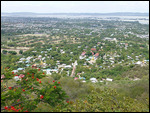
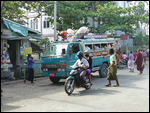
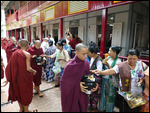
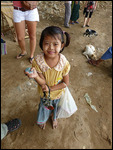
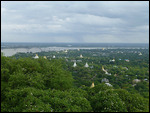
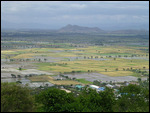
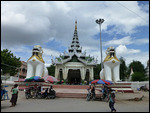









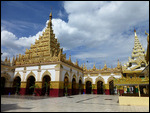


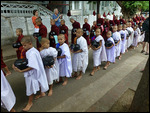
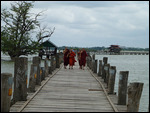
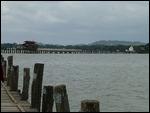
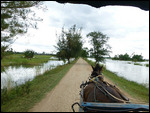
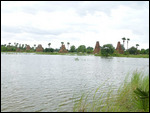
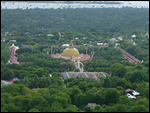
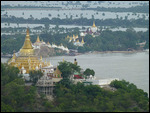
Ramesh
2012-08-10
Manadalay brings up evocative memories from literature. Burma is so close to us Indians and yet it seems to now be an exotic location few have visited.
But surely inner organs of beasts and fowls is a bit too much :)
parleusted
2012-08-18
@Ramesh : That is a quotation from 20th century literature. Yes, it is a bit much, but that was on the menu.